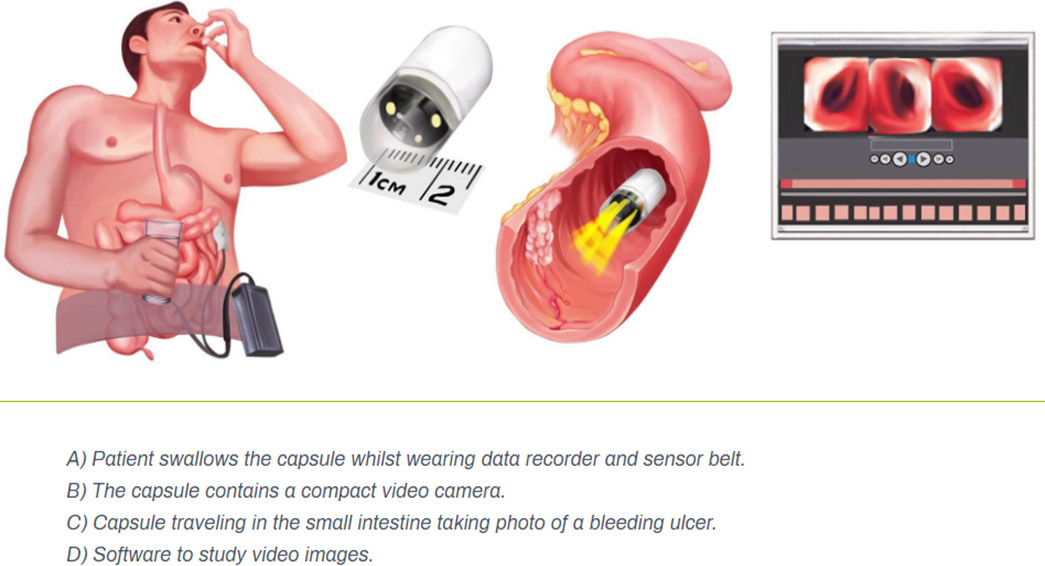Gastroenterology is the branch of medicine focused on the digestive system and its disorders. Diseases affecting the gastrointestinal tract, which include the organs from mouth into anus, along the alimentary canal, are the focus of this speciality.
Gastroenterologists perform a number of diagnostic and therapeutic procedures including colonoscopy, endoscopy, endoscopic retrograde cholangiopancreatography (ERCP), endoscopic ultrasound and liver biopsy.
The department of HEPATOLOGY & Clinical Nutrition is involved in treatment of jaundice, Liver failure, CLD ,Hepetitis B and C, NAFLD and all liver related disorders. We do liver biopsies and endoscopies for liver related problems.
Emergencies: All kinds of liver emergencies namely gastrointestinal bleeding, hepatic coma, acute infectious diseases of liver are dealt with by effcient team of Consultants.
Out patient services: Out patient services are provided from 10 am on wards. Prior appointment is desirable for prompt services. Appointments can be obtained from : 07948900882, +918849320675
An endoscopy (looking inside) is used in medicine to look inside the body. The endoscopy procedure uses an endoscope to examine the interior of a hollow organ or cavity of the body. Unlike many other medical imaging techniques, endoscopes are inserted directly into the organ.
The services are offered on outpatient as well as inpatient basis.
The unit offers the highest level of quality care before, during and after the examination.
The procedure room is equipped with latest high definition video endoscopy system from Olympus with facility for computer assisted digital storage and printouts.
Procedures are performed by a well qualified gastroenterologist aided by a proper support team.
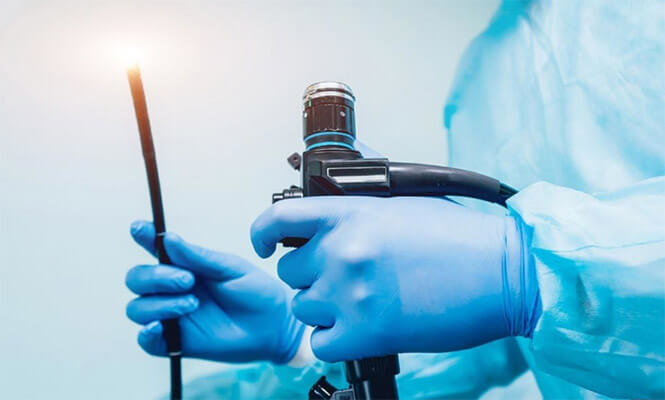
Upper GI endoscopy (sometimes called a ‘gastroscopy’ or simply an ‘endoscopy’) is a test which allows the doctor to look directly at the lining of the oesophagus (food pipe), the stomach and around the first bend of the small intestine – the duodenum. In order to do the test, an endoscope is passed through your mouth into the stomach. The endoscope is a long flexible tube (thinner than your little finger) with a bright light at the end. Looking down the tube, the doctor gets a clear view of the lining of the stomach and can check whether or not any disease is present. Sometimes the doctor takes a biopsy- a sample of tissue for analysis in the laboratory. The tissue is removed painlessly through the endoscope, using tiny forceps. Patient should be fasting for 8 hours for solid food and 2 hours for liquid preprocedure
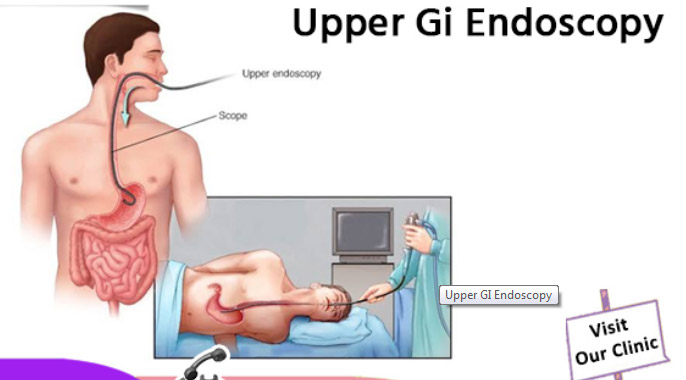
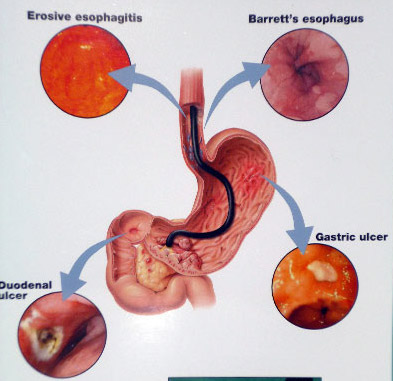
Colonoscopy is a test which allows the doctor to look directly at the lining of the large intestine (the colon). Diagnostic colonoscopy is recommended for alterations in bowel habits, occult or frank blood in the stool, unexplained anaemia and as a screening test for colon cancer. In order to do the test a colonoscope is carefully passed through the anus into the large intestine. The colonoscope is a long flexible tube, about the thickness of your index finger, with a bright light at its tip. The video camera on the colonoscope transmits images of the inside of the colon to a monitor allowing the physician to examine the lining of the colon checking for any disease or abnormalities.
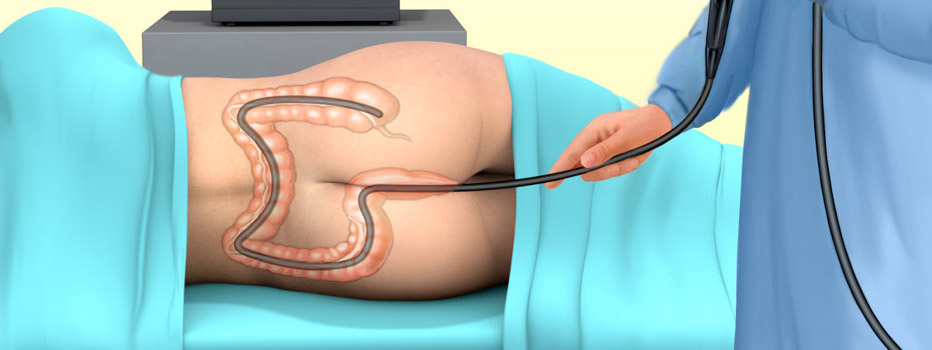
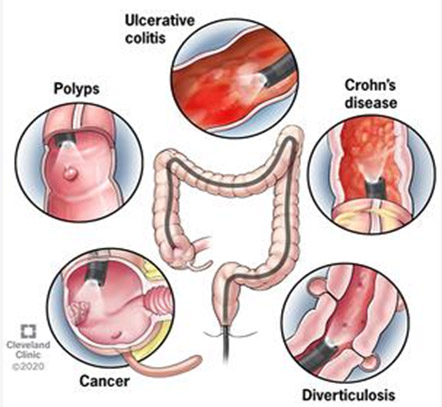
The procedure is performed by using a long, flexible, viewing instrument (a duodenoscope) about the diameter of a pen. The duodenoscope can be directed and moved around the many bends of the stomach and duodenum. The modern duodenoscope uses a thin fiber-optic bundle to transmit light to the tip of the endoscope, and a thin wire with a chip also at the tip of the endoscope to transmit digital video images to a TV screen. The duodenoscope is inserted through the mouth, through the back of the throat, down the food pipe (esophagus), through the stomach and into the duodenum. Once the papilla of Vater is identified, a small plastic catheter (cannula) is passed through an open channel of the endoscope into the opening of the papilla, and into the bile ducts and/or the pancreatic duct.
Contrast material (dye) is then injected and X-rays are taken of the bile ducts and the pancreatic duct. Another open channel in the endoscope also allows other instruments to be passed through it in order to perform biopsies, to insert plastic or metal stents or tubing to relieve obstruction of the bile ducts or pancreatic duct caused by cancer or scarring, and to perform incisions by using electrocautery (electric heat).
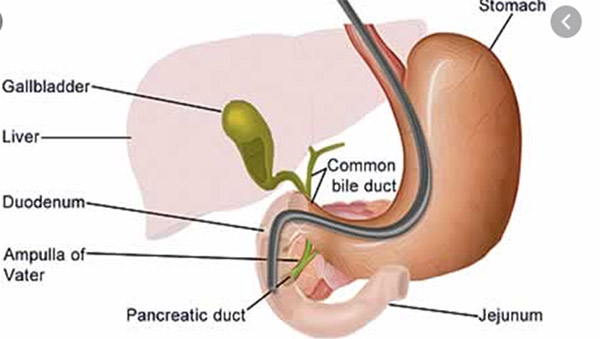
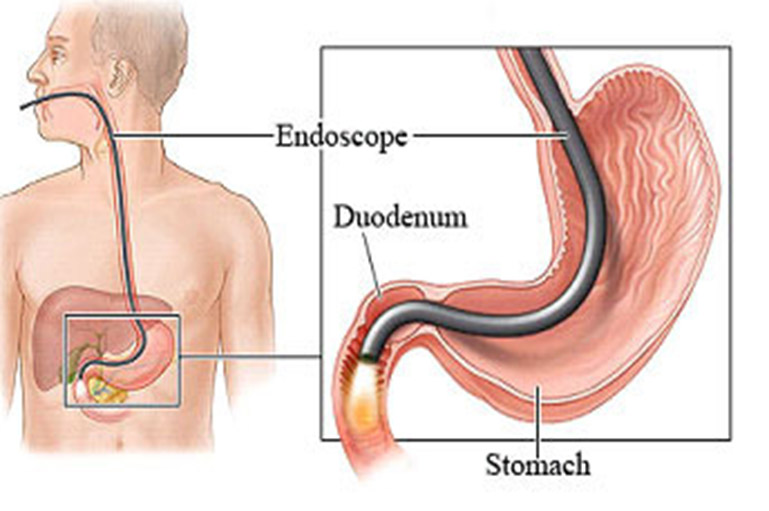
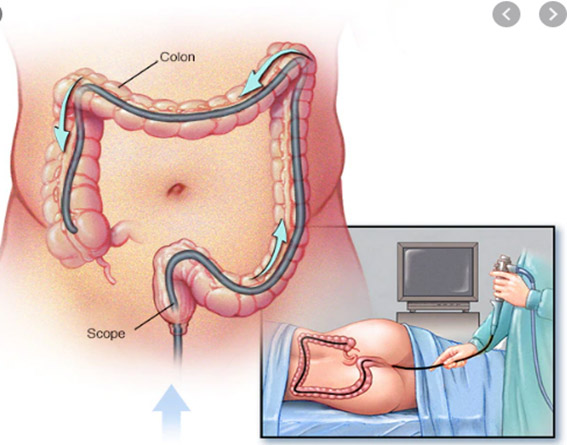
Capsule Endoscopy involves ingesting a small (the size of the large vitamin pill) capsule, which contains a colour camera, battery, light source and transmitter. The camera takes two pictures every second for eight hours, transmitting images to a data recorder about the size of a portable CD player that patients wear around the waist.
